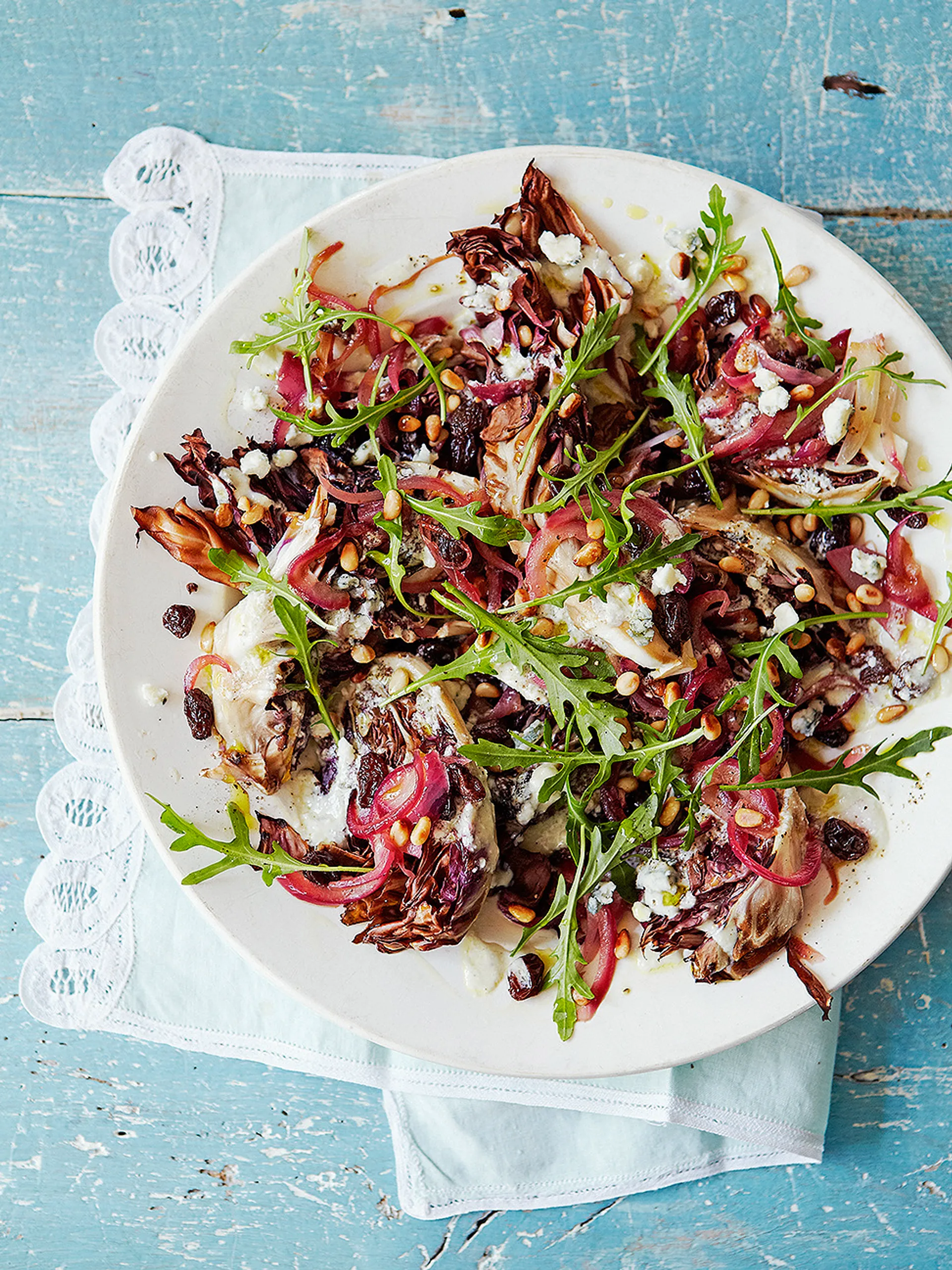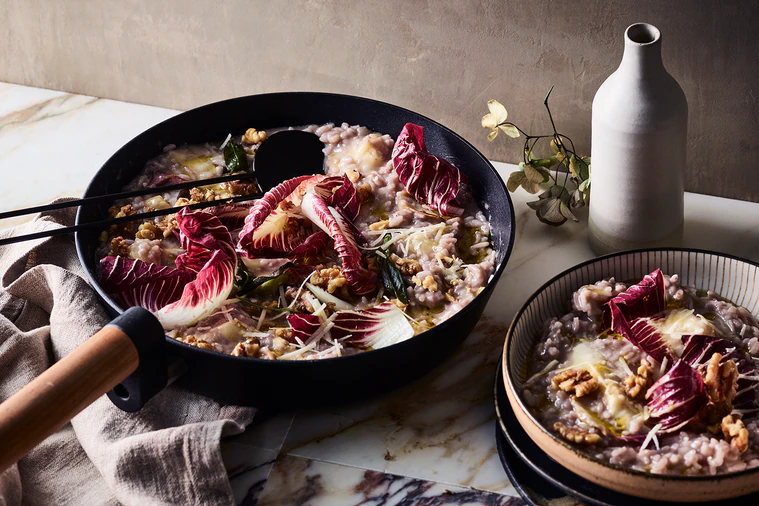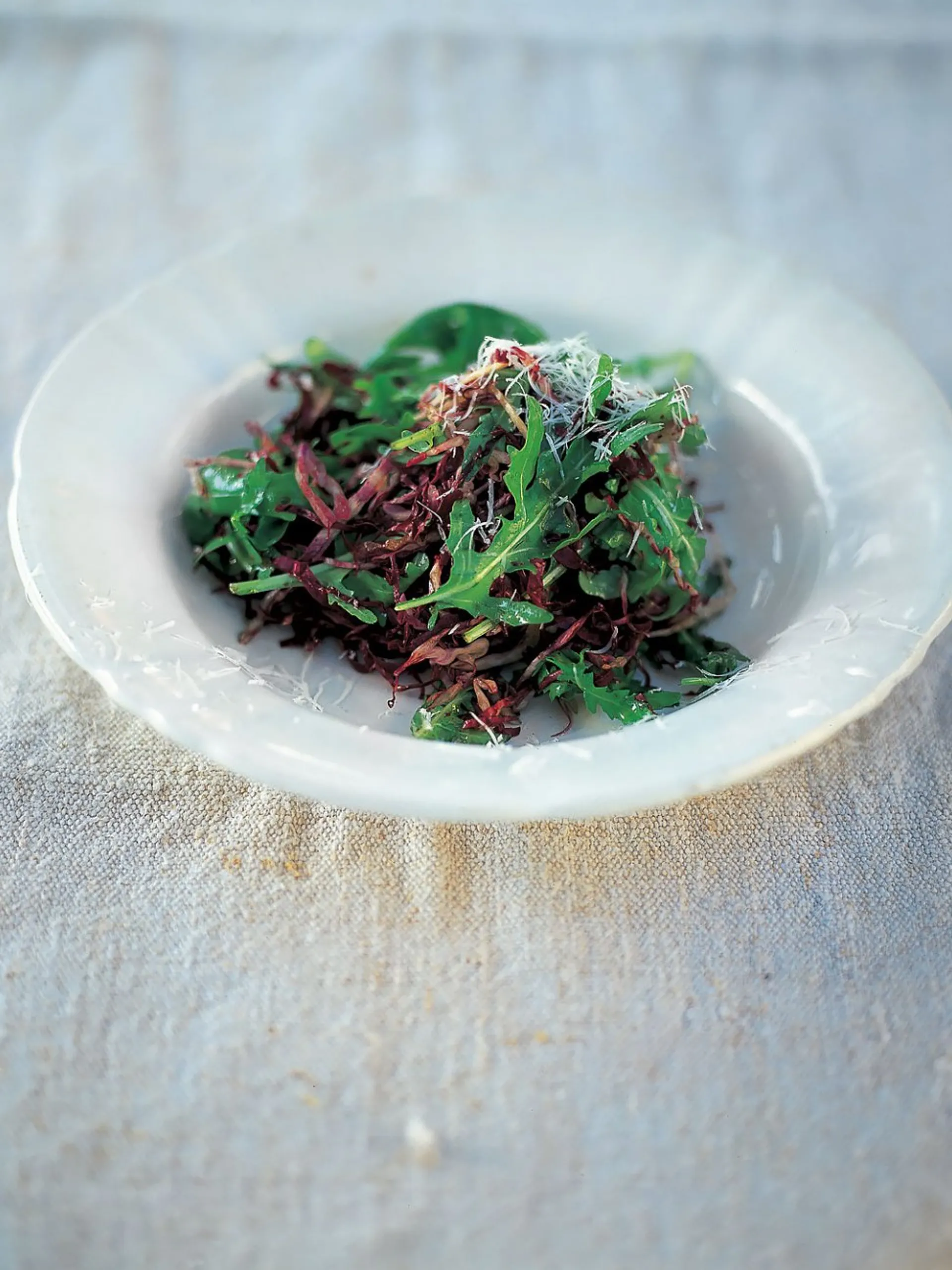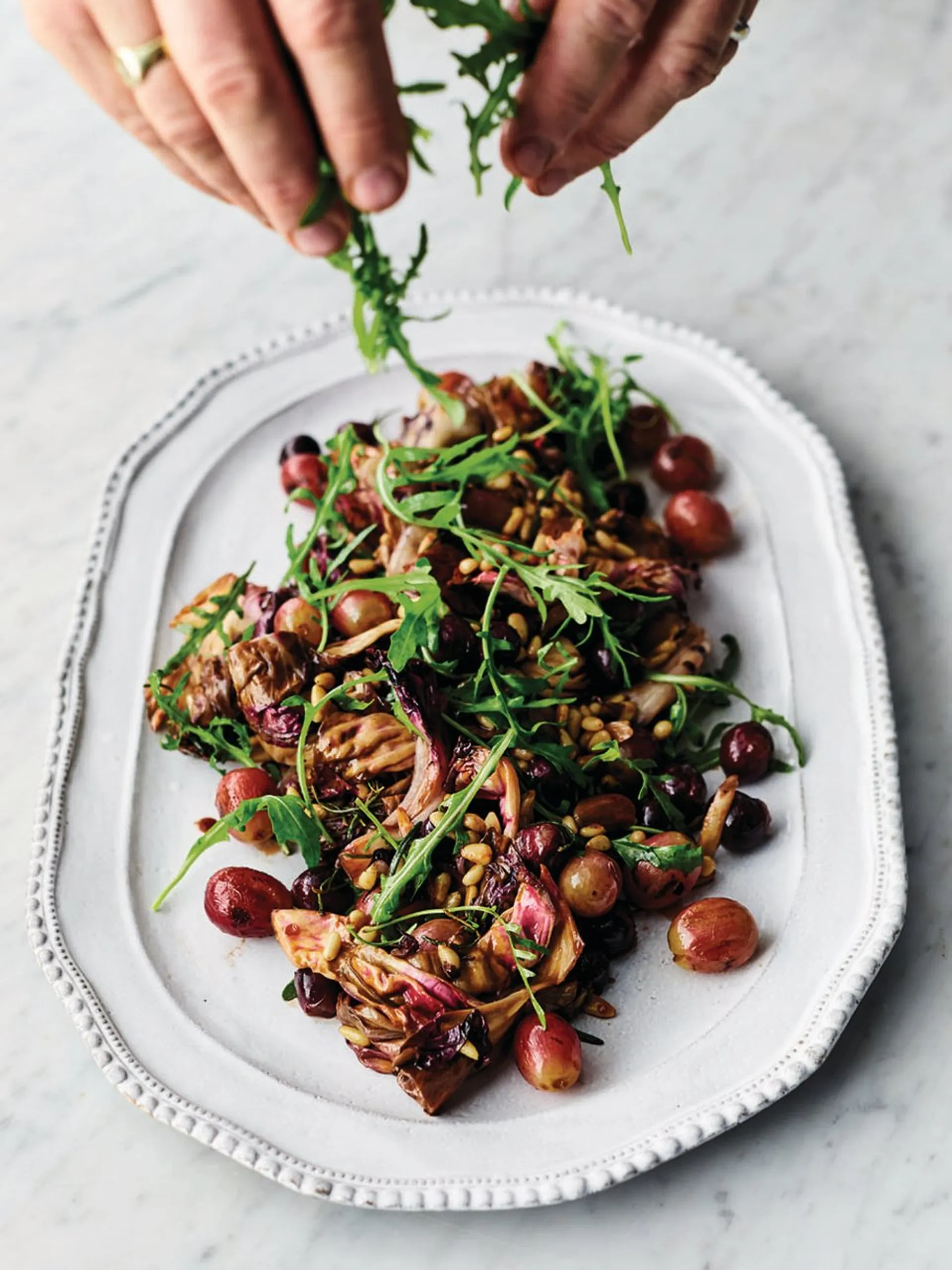"That doesn't look like a salad to me! Where's the arugula? Where's the radicchio?" Will and Grace

I'm talking about radicchio because it turned up in my lucky dip book - one of those old Time/LIfe books - this one written by Waverley Root way back in 1969 when he could describe radicchio, in his page on the Veneto, as:
"a lettuce-like plant, found nowhere else in the world."
And indeed there is no reference to radicchio in any of my early gurus' books, not even in Jane Grigson's otherwise comprehensive Vegetable Book. Yet today it's one of those trendy foods, that the rest of us mostly reject because it's costly. And also because it's bitter. But it is so beautiful. I chose that photo above to head this post because of its beauty, and because it was different from the usual bright red. It comes from an Instagram post - of course - from Jamie Oliver - who remarked that 'they can handle the frost,' which is interesting because somebody else, mentioned that it is grown in warmer climes.
But yes, beauty + bitterness are the opposing attributes that guaranteed its success in the modern culinary world. It looks good on the plate and the bitterness adds something as well as contrasting with its companions on the plate:

"I think of bitter foods as I would spicy or salty foods. Too much can derail a dish but, balanced with other flavours– sweet, sharp, salty – bitter can be that triumphant, missing piece of a dish’s flavour puzzle. Bittersweet, you could say." Anna Jones
Cheese, often a strong cheese such as a blue cheese is a constant companion, as are citrus fruits.
"The cabernet-hued chicory is slowly edging the baby kale and butter lettuces off the plate—landing on restaurant menus, in magazine spreads, and flowing down the Technicolor waterfall of Instagram." Leah Koenig/Taste (US)

As shown here in this Radicchio, orange and fennel salad from Julian Parisi who is a restaurateur on the delicious. website. And that's a very common flavour combination as well, which fits into Jamie Oliver's comment about radicchio itself as:
"a wonderful expression of bitter, sweet and perfume"
So where does it come from? Yes it does come from Italy, specifically the North East of Italy, particularly the Veneto. It was a wild plant, that still grows wild all over the area in spite of having been domesticated, and is now grown all over the western world:
"Domestic, but just one generation away from a successful reversion to wildness. Wander the lawns and pastures of Veneto and you will see wild, or perhaps feral, radicchio everywhere." Margarett Waterbury/Liberate Diversity
In the words of Rachel Roddy:

"it began in a wild, spontaneous way, with bitter Cichorium intybus, which grows all over the planet and has many names. Particular cultivation and development took place in the north of Italy: Veneto, Trentino, Friuli-Venezia Giulia.
Red leaves as we know them started in the early 1900s, when Belgian and Italian agronomists developed a technique called imbianchimento (whitening, blanching or preforcing). Pulled from the soil and placed in water in dark sheds, the plants’ chlorophyll production is inhibited, causing them to lose their green pigmentation and develop dark red, white-veined and sturdy leaves."
The transformation from weed to trendy vegetable began after World War 2:
"As Italy metamorphosed from a society in ruins to a society known for aspirational luxury, everything Italian, even something as seemingly unsuited for international consumption as a bitter leaf, experienced a kind of borrowed la bella vita glow." Margarett Waterbury/Liberate Diversity
And so by the 80s chefs, looking for new ingredients, and in a world looking for new cuisines to try, the rise of the radicchio accelerated:

"With the concurrent efforts of a few great farmers and a few enthusiastic chefs, a vegetable like radicchio can quickly transform from a cultural particularity to a mainstream sensation. One need only think about kale chips or cauliflower “rice” to understand the power of culinary groupthink." Leah Koenig/Taste (US)
Or quinoa.
The exclusiveness of the thing was enhanced by the towns of Chioggia, Treviso and Castelfranco in the Veneto obtaining IGP certification that ensures only radicchio grown there under specific conditions can be given the name of the town. Chioggia raddichio is round, Treviso is long, and Castelfranco is yellowish with pink veins and looser. Radicchio itself, as found in our supermarkets, even greengrocers and markets is expensive enough but if it's a genuine IGP I imagine it would be very expensive - and not as fresh, as it would have to be flown in from Italy.
So what can you do with it apart from salads, and should you cook it anyway? Well yes you should because:
"despite the fact it means they turn from bright red to brown, cooking brings out the best in them. That’s because it tempers the bitterness, turns crisp into soft and velvety, and brings out the warm and nutty side." Rachel Roddy
She offers some general suggestions:
"Cut into wedges and either bake on an oiled tray until soft with crisp tips, or cover with cheesy béchamel for a gratin. Grilled, griddled, sauteed with onion for pasta or shredded and stirred into risotto – good ways all of them." Rachel Roddy
And delicious. has a heap of suggestions - as do many other such websites, but I couldn't resist picking out a few from here and there. So in no particular order, beginning with grilling, which seems to be a traditional way of cooking it: Two from my Italy the Beautiful cookbook, by Lorenza de Medici, but alas with no recipes online - Radicchio alla pancetta (with the Castelfranco radicchio - but a red version, and Radicchio di Treviso alla Griglia. Grilled radicchio with Gorgonzola dressing from Jamie Oliver who also has a recipe for Radicchio di treviso marinato all agriglia con aglio e aceto balsamico in his book Jamie's Italy but which is not online. Then Molly Watson from The Spruce Eats is slightly different with Sautéed radicchio. So more pictures than recipes but there are heaps of recipes for grilled radicchio online.
Risotto is another traditional way of cooking radicchio and of course Rachel Roddy has one of them - Radicchio and Gorgonzola risotto and Sylvia Colloca also has a risotto - Risotto with raddichio, walnuts and Taleggio - walnuts being another common partnering ingredient.
On the salad front Ottolenghi combines grilled with salad (as do many others I have to say) - Grilled radicchio and kale salad with orange and hazelnuts. Jamie comes up with another common combination Radicchio and rocket salad, and also a Warm grape and radicchio salad - warm because the radicchio is grilled.
Last but not least - the outliers: Ottolenghi's Radicchio bruschetta with Taleggio and truffled honey; Anna Jones' Strazzapretti with radicchio and balsamic dressing and Thomasina Miers' Falling-apart chicken legs with radicchio, pancetta and rosemary
I don't think I have eaten radicchio as anything other than a component of a salad, but I should certainly be braver with my salads - it's an upcoming summer vow - and I should certainly be braver with my vegetable varieties. After all although radicchio is indeed more expensive than other things, it's not completely over the top ridiculous in price. That chicken dish looks tempting.

I have been putting off this lucky dip because it was two pages of dense text and illustrations of making coffee which I have done before, but today I looked a little closer and saw there were actually several things that were more appealing. The radicchio was the most attractive. And we had been to Treviso on our first trip to Italy - a beautiful old town. Well they all are aren't they. Never to be seen again. Sigh.
SO THOSE YEARS GONE BY
November 8
2022 - Nothing
2021 - What's your signature dish?
2020 - One more oaty thing
2019 - Vincotto/vino cotto/sapa
2018 - A word from Yotam Ottolenghi
2017 - Nothing
2016 - Japanese food





















Defitely a foodie blog, lots of foodie words and ideas which confuse simple minds like mine I am afraid